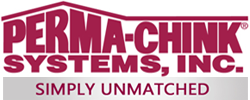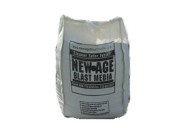 Perma-Chink Systems, Inc
Log & Timber Home Care Experts
Perma-Chink Systems, Inc
Log & Timber Home Care Experts
Michael
The following are guidelines to follow after performing a borate treatment to your log home.
Shell-Guard® RTU
Washing – Never wash down a wall within five days of application. It’s really best to wait at least seven days. In practice, there are very few occasions when a wall treated with Shell-Guard RTU needs to be washed at all. As long as the first coat of finish can be applied within seven days of application, there is no need to wash it down. If, for some reason, there is a delay in applying the first coat of finish or discolorations or white residue is present, then washing with water or Log Wash™ may be appropriate but under no circumstance should the wall be washed less than five days after the Shell-Guard RTU was applied. Too much of the active borate will be washed away.
Over the past few years there has been a lot of talk about volatile organic compounds (VOCs) and how they are concerned with products used on log homes. Here are some frequently asked questions about VOCs as they relate to log home finishes and sealants.
UV Boost™ is a concentrated water-based, liquid stain additive that contains a hindered amine light stabilizer specifically designed for wood protection.
Some regions of the country such as the southeast, southwest, and higher altitude areas are subject to high intensity sunlight. Over time, the ultraviolet light in sunlight photo-oxidizes the lignin component of wood. When added to the first coat of any of our Lifeline™ water-based stains, UV Boost interacts with the lignin thus slowing the photo-oxidative rate that results in wood darkening and eventually wood graying beneath the stain.
Energy efficiency is a subject that most people are aware of, including log home owners and those people contemplating the purchase of a log home. Energy costs are on the rise, and energy efficiency is a key consideration well before the first log is ever laid down on-site.
With this in mind, we occasionally get asked about the R-value of our chinking and/or backing materials, since many people assume that they provide some insulation value to the exterior walls. In point of fact, neither the Perma-Chink nor the backing material contributes any significant insulation value to a wall. What they do impact is the elimination of outside air infiltration into the home. This has a much greater impact on the overall energy efficiency of a home than adding a minor amount of insulation to a wall.
Shell-Guard™ Concentrate, Shell-Guard RTU, and Armor-Guard™ are all used as solutions that contain water. Since time and cold temperatures affect each of these products somewhat differently, we’ll address each product individually.
Most of the Directions for Use for our finishes contain the statement “Do not use Lifeline™ on surfaces that have been brushed or rubbed with steel wool or a wire brush. If you do, rust spots may appear under the finish.” Fortunately we rarely see the consequences of applying one of our finishes over a wall that has been rubbed or brushed with steel wool or a wire brush, but occasionally it does happen.
Although it has been over ten years since we made our last batch of Proguard™, we still get occasional calls relating to the application of our stains over surfaces top-coated with Proguard.
NBS-30
NBS-30 is an oil-based insecticide additive for paints and stains. Pure and simple, oils and water do not work together and we DO NOT approve the use of NBS-30 in any of our finishes.
Log siding presents much more of a sealing challenge than stacked logs for several reasons. As stacked logs season and shrink, they settle on top of each other. If there are sealed gaps between the logs, the width of the gaps between the logs may remain fairly uniform as the logs settle. On the other hand, log siding is nailed or screwed into dimensional lumber which holds the siding in place. As shrinkage occurs, the gaps between the courses can become wider and wider (see pictures below). In addition, if the siding is not properly attached to the wall, it can twist and warp, creating even larger gaps between the courses.
Occasionally we get a call from someone whose home has a gray aged patina that appeals to them. They typically want to apply some type of clear water repellent to seal and protect their home, but they don’t want to remove the grayed wood. The gray color is an indication that the surface wood has been photo-oxidized by ultraviolet (UV) light and the wood fibers have lost their integrity.
New Age Blast Media Available Sizes
Call 1-800-548-3554 to Order
Features
- Made from recycled glass
- Superior to corn, walnut, sand or soda media
